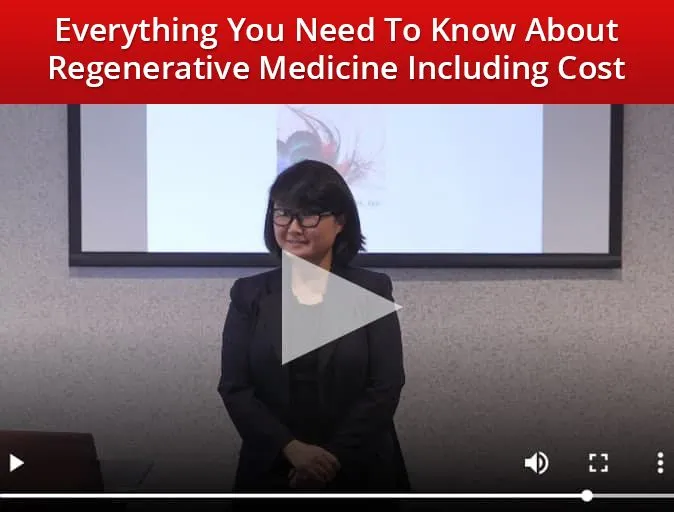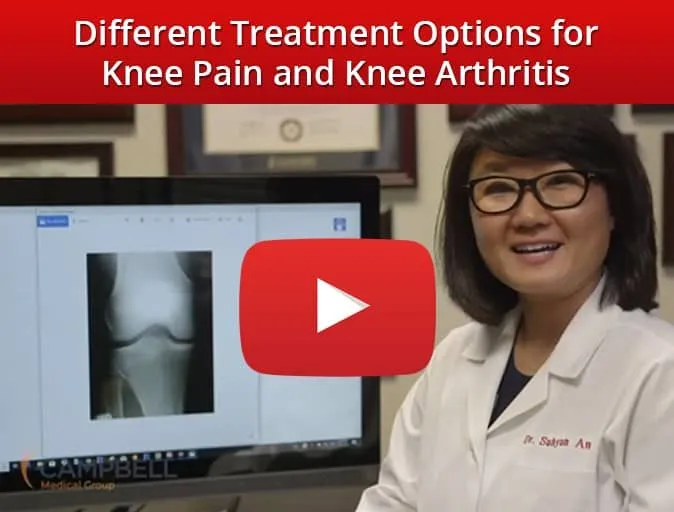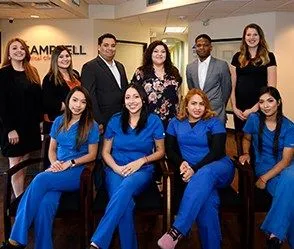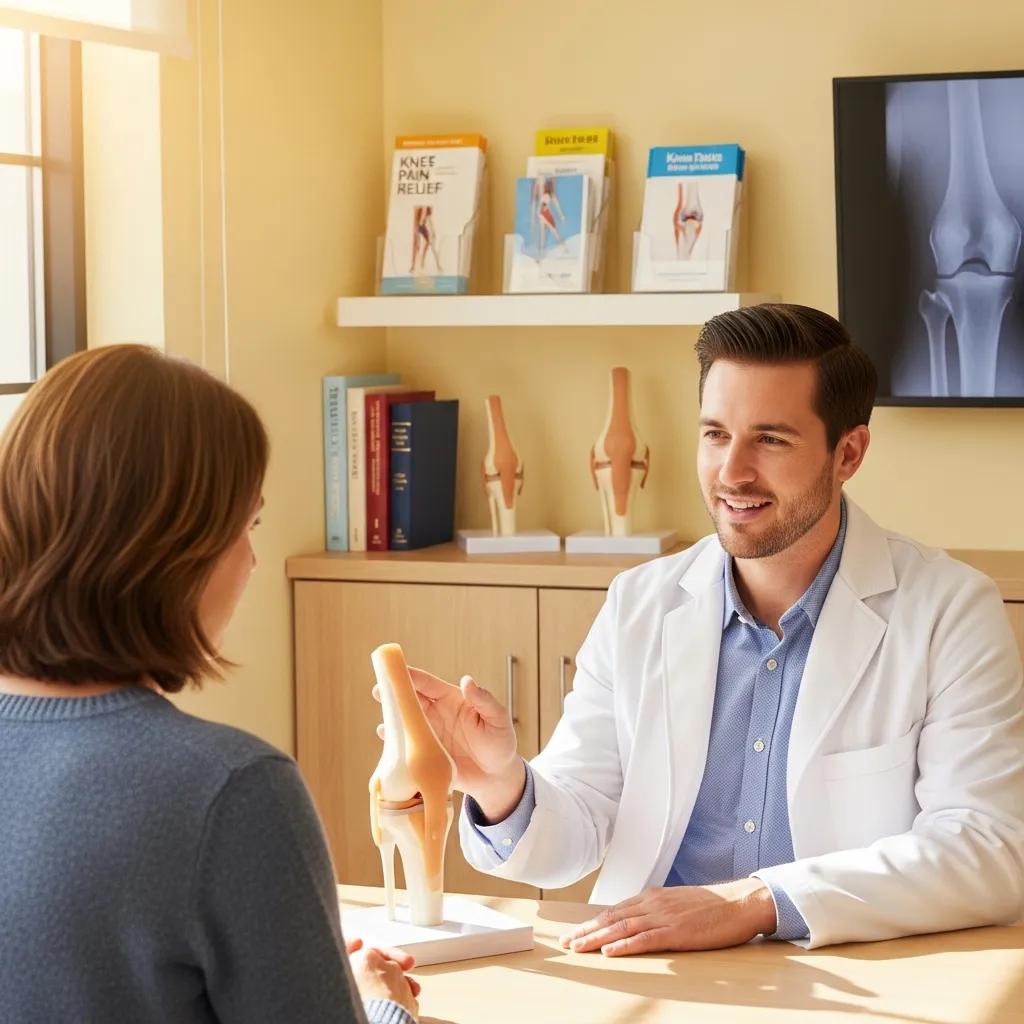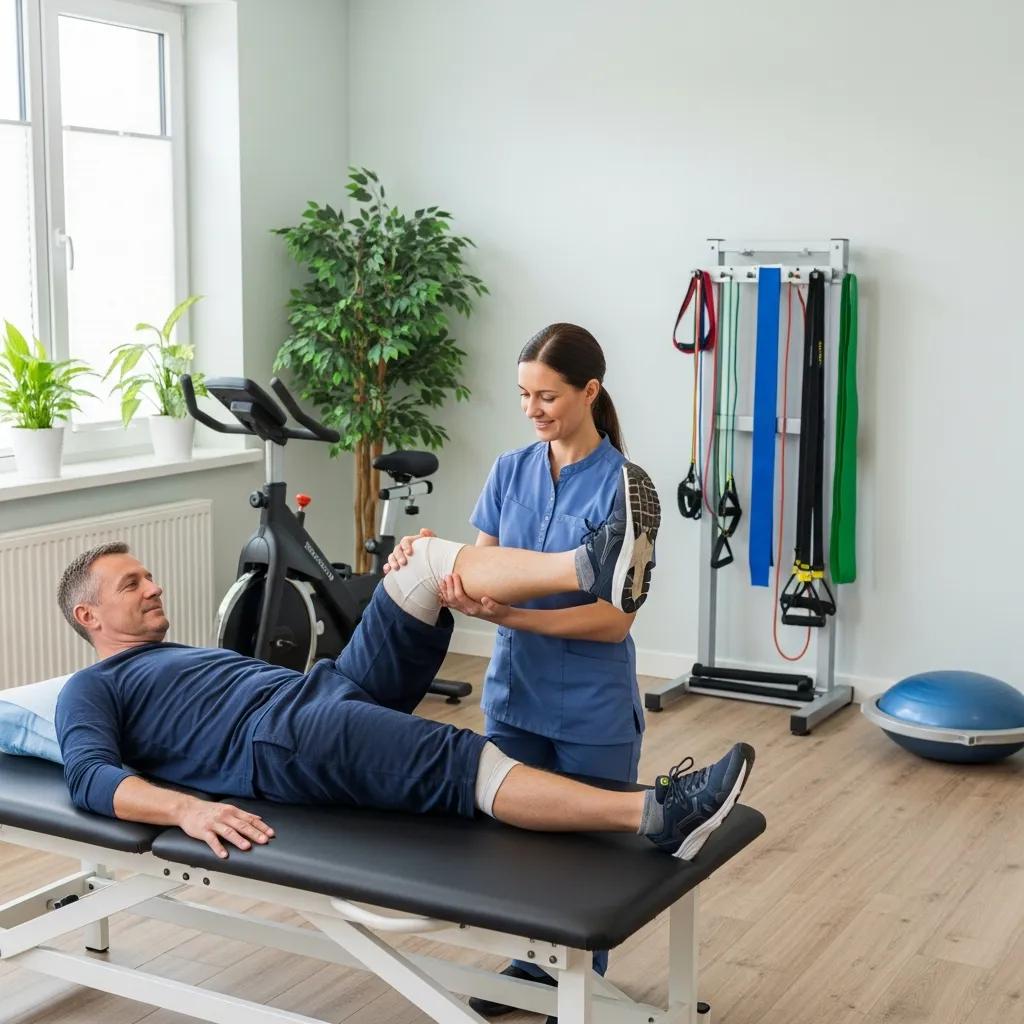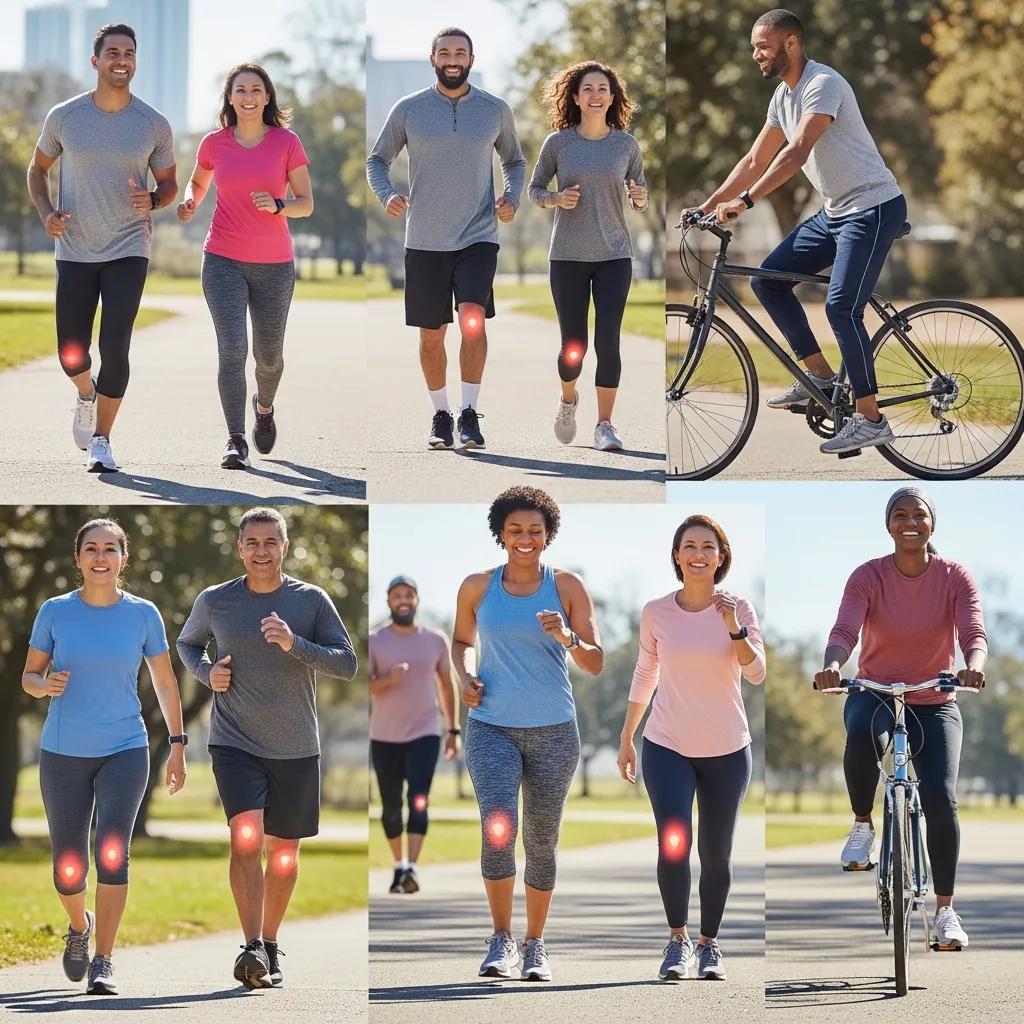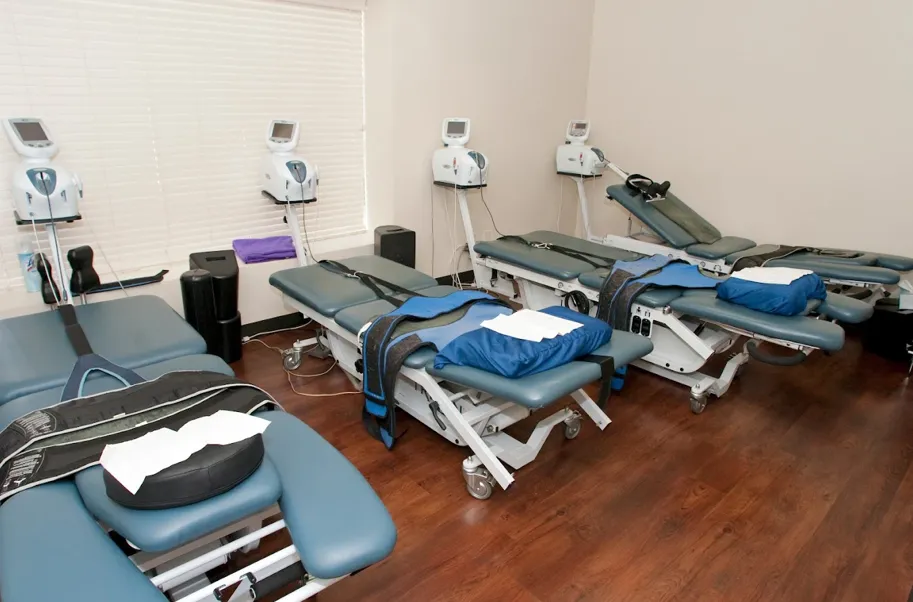
Effective Non-Surgical Options for Lasting Joint Pain Relief
Living with persistent joint pain can significantly impact your mobility, mood, and overall quality of life. Fortunately, innovative non-surgical treatments offer effective, lasting relief without the extended recovery typically associated with surgery. At Campbell Health Center in Houston, TX, under the expert guidance of Dr. Suhyun An, our pain management specialists are pioneers in regenerative medicine. Dr. An’s innovative system focuses on advanced procedures like stem cell therapy, platelet-rich plasma (PRP), and cutting-edge Pulsed Electromagnetic Field (PEMF) therapy. These non-surgical solutions are designed to accelerate tissue repair, reduce inflammation, restore joint function, and crucially, help patients avoid reliance on pain medications and the need for invasive surgery. This guide explores the most effective non-surgical treatments for joint pain, identifies which conditions benefit most, compares leading therapies, highlights advantages over surgery, outlines candidacy criteria, describes what to expect during procedures, suggests lifestyle complements, and guides you on scheduling a complimentary consultation with our dedicated team.
What Are the Most Effective Non-Surgical Treatments for Joint Pain Relief?
Non-surgical joint pain treatments utilize advanced biologic and minimally invasive technologies to target inflammation, stimulate natural tissue regeneration, and interrupt pain signals without the need for incisions. Our leading options, part of Dr. An’s comprehensive system, include Stem Cell Therapy, Platelet-Rich Plasma (PRP) Therapy, Pulsed Electromagnetic Field (PEMF) Therapy, and Physical Therapy. Each method works differently to provide lasting relief and help you avoid pain medications and surgery: stem cells help recruit your body’s own repair cells, PRP delivers concentrated growth factors, PEMF stimulates cellular repair and reduces inflammation, injections reduce inflammation, and physical therapy strengthens supporting muscles. Understanding these approaches will help you choose the best solution for conditions like osteoarthritis, rheumatoid arthritis, tendon injuries, and other chronic joint issues.
How Does Stem Cell Therapy Promote Joint Healing and Pain Relief?
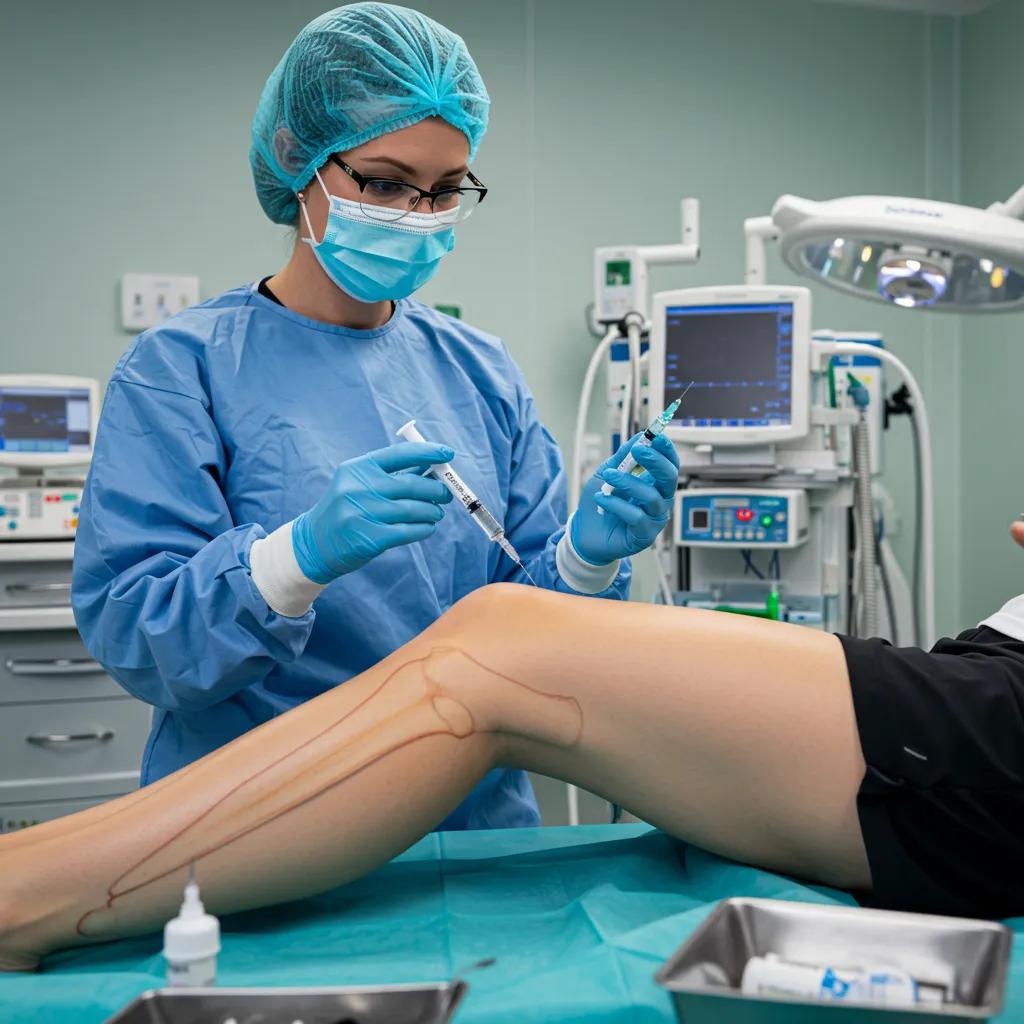
Stem cell therapy harnesses your body’s own regenerative cells to help repair damaged cartilage and reduce inflammation within your joints. During the procedure, we harvest cells from your adipose tissue, process them to concentrate the regenerative components, and then inject them into the affected joint under precise ultrasound guidance. The potent growth factors released by these stem cells accelerate tissue regeneration, decrease inflammatory responses, and improve joint lubrication, ultimately leading to reduced pain and enhanced mobility. Patients typically experience gradual improvement over several weeks as the new tissue integrates, with minimal downtime and a very low risk of adverse reactions, offering a powerful alternative to surgery and pain medications.
What Is Platelet-Rich Plasma (PRP) Therapy and How Does It Work?
PRP therapy concentrates the healing power of platelets from your own blood to stimulate tissue repair in inflamed or degenerated joints. We draw a small sample of your blood, then use a centrifuge to isolate and concentrate the platelets, which are rich in vital growth factors. These concentrated platelets are then carefully injected into the target joint, often with imaging guidance. The growth factors released by the platelets promote collagen synthesis, enhance cellular repair, and help regulate inflammation, resulting in significant pain reduction and improved joint function. Most individuals can resume their normal daily activities within a day, noticing progressive relief over the following two to three months, helping them avoid surgery and pain medications.
How Does Pulsed Electromagnetic Field (PEMF) Therapy Aid Joint Recovery?
Pulsed Electromagnetic Field (PEMF) therapy, a cornerstone of Dr. An’s approach, utilizes targeted electromagnetic pulses to stimulate cellular repair and regeneration at a fundamental level. These gentle, non-invasive fields penetrate deep into joint tissues, enhancing circulation, reducing inflammation, and accelerating the natural healing processes. PEMF therapy helps to re-energize damaged cells, promoting the production of ATP (cellular energy) and improving nutrient absorption, which collectively leads to significant pain reduction and improved joint function. It’s a powerful tool in avoiding reliance on pain medications and preventing the need for surgical intervention, with patients often experiencing progressive relief and enhanced mobility over a course of treatments.
How Do Joint Injections Provide Relief for Arthritis and Inflammation?
Joint injections deliver potent corticosteroids or advanced regenerative substances directly into the inflamed synovium to effectively reduce swelling and pain. Corticosteroids work quickly to block inflammatory pathways, offering relief within days that can last for several weeks to months. Biologic injectables can complement this by further improving joint lubrication and promoting tissue repair. By precisely targeting the source of inflammation, these injections help restore your range of motion and can delay or even avoid the need for surgical intervention, all without significant systemic side effects and reducing the need for pain medications.
What Role Does Physical Therapy Play in Non-Surgical Joint Pain Management?
Physical therapy is crucial for strengthening the muscles surrounding painful joints, enhancing flexibility, and retraining movement patterns to reduce stress and stabilize the joint. Therapeutic exercises are designed to increase synovial fluid circulation, decrease stiffness, and promote balanced biomechanics. Manual techniques and modalities like ultrasound or electrical stimulation can further enhance exercise protocols by accelerating tissue healing and reducing pain. Integrating physical therapy with regenerative treatments significantly improves overall outcomes and supports long-term joint health, helping patients avoid surgery and pain medications.
Which Joint Conditions Can Benefit from Non-Surgical Pain Relief Treatments?
Our non-surgical interventions are designed to address a wide spectrum of joint conditions by targeting underlying inflammation, degeneration, and pain transmission. Patients experiencing osteoarthritis and rheumatoid arthritis often find significant relief through regenerative injections. Knee pain resulting from meniscal tears, ligament sprains, or cartilage loss responds exceptionally well to PRP and PEMF. Hip pain caused by bursitis or early-stage arthritis can benefit greatly from targeted stem cell or PRP injections. Chronic back pain involving facet arthropathy is effectively managed with therapeutic exercise. Additionally, neuropathy symptoms stemming from nerve compression or diabetic neuropathy can improve with regenerative cell therapy and PEMF.
How Are Osteoarthritis and Rheumatoid Arthritis Treated Without Surgery?
For osteoarthritis, our treatment approach often centers on PRP to encourage cartilage repair. Rheumatoid arthritis frequently responds well to corticosteroid injections and advanced biologic regenerative therapies, including PEMF. Physical therapy plays a vital role in maintaining joint stability and strength. A personalized combination of these approaches helps reduce swelling, preserve joint structure, and delay or avoid the need for joint replacement surgery and pain medications.
What Non-Surgical Options Are Available for Knee Pain Relief in Houston, TX?
In Houston, TX, individuals suffering from knee pain have access to advanced treatments including PRP therapy, autologous stem cell treatments, and PEMF therapy, all designed to regenerate cartilage, reduce inflammation, and help avoid surgery. Complementary physical therapy programs further support recovery by addressing muscular imbalances and modulating pain pathways, ensuring a comprehensive and effective strategy for restoring your mobility without relying on pain medications.
How Can Hip Pain Be Managed with Non-Invasive Treatments?
Hip pain stemming from bursitis or early-stage arthritis can be effectively alleviated through ultrasound-guided stem cell or PRP injections that promote soft-tissue healing and provide anti-inflammatory benefits. PEMF therapy can further enhance cellular repair. Integrating targeted exercises and manual therapy further enhances range of motion and functional stability, helping patients avoid surgery and pain medications.
What Are the Best Non-Surgical Solutions for Chronic Back Pain?
Chronic back pain resulting from facet joint degeneration, disc disease, or spinal stenosis can be effectively managed with epidural steroid injections to reduce inflammation, regenerative cell therapies, and PEMF therapy to repair damaged tissues and promote healing. Structured physical therapy is essential for strengthening core muscles, correcting posture, and improving spinal biomechanics. Sessions can complement these treatments by balancing neuromodulators and alleviating muscular tension, all contributing to avoiding surgery and pain medication.
How Is Neuropathy Addressed Through Non-Surgical Therapies?
Our non-surgical neuropathy treatments, part of Dr. An’s comprehensive system, combine regenerative injections, such as stem cell or PRP, with PEMF therapy and neuromuscular reeducation techniques to help restore nerve function and reduce pain. Growth factors and PEMF stimulate nerve repair, while techniques improve blood flow and reduce pro-inflammatory mediators. Physical therapy focuses on gait training and desensitization exercises that support nerve recovery and promote functional independence, offering a path to relief without surgery or heavy pain medications.
What Are the Benefits of Choosing Non-Surgical Joint Pain Treatments Over Surgery?
Non-surgical options, championed by Dr. Suhyun An’s system, significantly reduce procedural risks, eliminate the need for general anesthesia, and avoid the extensive rehabilitation typically required after joint replacement surgery. Patients benefit from much faster recovery times, often returning to their daily activities within days rather than months, and crucially, these treatments help them avoid reliance on pain medications. These treatments can be repeated as necessary, adapt to the progression of disease, and preserve your native joint anatomy. By focusing on tissue regeneration and pain interruption, non-surgical approaches promote sustained function and enhance your quality of life without the potential complications associated with implants, such as wear or infection, offering a true alternative to surgery.
How Do Non-Surgical Options Reduce Risks and Recovery Time?
Minimally invasive injections and PEMF therapy bypass the need for large incisions, thereby decreasing the risk of infection and blood loss. Performed under local anesthetic and with precise image guidance, these procedures are highly accurate and conducted on an outpatient basis, allowing for immediate weight-bearing and mobility. Rapid symptom relief and low complication rates translate to fewer follow-up visits and a quicker return to work, hobbies, and daily life, all while helping you avoid pain medications and surgery.
Can Non-Surgical Treatments Improve Quality of Life and Mobility?
By effectively targeting pain pathways and stimulating tissue repair, regenerative injections and PEMF therapy restore joint comfort and improve your range of motion. Strengthening exercises further enhance joint stability and overall function. Patients frequently report improved sleep quality, significantly reduced reliance on pain medication, and a renewed ability to engage in hobbies, travel, and everyday tasks without discomfort, offering a path to a life free from surgical intervention.
What Are the Long-Term Effects and Repeatability of These Treatments?
Many of our non-surgical therapies provide relief that lasts from six months to several years, and they can be safely repeated to maintain optimal joint health. Stem cell, PRP, and PEMF procedures may offer cumulative benefits as regenerated tissue helps reinforce joint integrity over time. These treatments can be administered multiple times throughout a patient’s life, offering a sustainable and effective strategy for managing chronic pain and avoiding surgery and pain medications.
Who Is a Good Candidate for Non-Surgical Joint Pain Relief Treatments?
Ideal candidates for Dr. Suhyun An’s non-surgical system typically experience joint pain stemming from arthritis, tendon injuries, or nerve irritation, without severe joint deformity or instability. Patients who wish to avoid surgery and reduce their reliance on pain medications, or those with medical conditions that contraindicate anesthesia, often find our minimally invasive options to be highly beneficial. Dr. An and her team at Campbell Health Center conduct a thorough evaluation of your overall health, joint integrity through imaging, and personal goals to tailor a personalized treatment plan that maximizes both safety and efficacy, guiding you towards lasting relief.
What Factors Determine Candidacy for Stem Cell and PRP Therapies?
Candidacy for stem cell and PRP therapies primarily depends on the severity of the joint condition, the availability of healthy tissue for harvesting (in the case of stem cells), and the absence of active infection or uncontrolled systemic diseases. Patients with early to moderate degeneration, adequate bone and cartilage structure, and realistic expectations are most likely to achieve significant improvement and avoid surgery. Certain blood-borne disorders or severe autoimmune conditions may limit suitability.
Are There Contraindications or Risks to Consider?
Potential contraindications include active infection at the injection site, known bleeding disorders, or the use of certain anticoagulant medications. Although rare, potential risks such as transient swelling, bruising, or discomfort at the harvest and injection sites can occur. A comprehensive medical assessment and adherence to strict procedural protocols are designed to minimize complications and ensure your safety, helping you avoid pain medications and surgery.
How Does Campbell Health Center Personalize Treatment Plans?
At Campbell Health Center, Dr. Suhyun An and her specialists conduct a detailed evaluation of your medical history, review imaging studies, and perform functional assessments to precisely identify the root causes of your pain. By combining advanced regenerative injections (like PRP and stem cell therapy), PEMF therapy, physical therapy, and lifestyle guidance, we craft a multimodal plan that aligns perfectly with your individual goals of avoiding surgery and pain medications. Ongoing follow-up and outcome tracking allow us to make necessary adjustments and ensure optimal long-term benefits from Dr. An’s comprehensive system.
What Can Patients Expect During and After Non-Surgical Joint Pain Procedures?
Patients typically begin with a thorough consultation that includes a review of imaging and a discussion of their goals. This is followed by an outpatient procedure performed under local anesthetic. Post-procedure protocols vary depending on the specific modality but generally permit immediate weight-bearing and a gradual return to activities. Pain relief often begins within days to weeks, with functional gains peaking over several months as tissue healing and neural modulation progress, all contributing to avoiding pain medications and surgery.
How Is Stem Cell Therapy Performed at Campbell Health Center?
Following your complimentary consultation, and as part of Dr. An’s advanced system, adipose tissue is harvested using a minimally invasive liposuction technique. The sample is then processed in our state-of-the-art closed-system centrifuge to isolate the regenerative cells. These concentrated cells are subsequently injected into the targeted joint under precise ultrasound guidance. The entire procedure typically takes less than two hours, and patients are monitored briefly before returning home with specific post-procedure activity guidelines, all aimed at helping you avoid surgery and pain medications.
What Are Common Side Effects and How Are They Managed?
Mild injection-site swelling, temporary bruising, or discomfort may occur following any procedure but typically resolve within a few days. Applying ice, using over-the-counter analgesics, and modifying activity levels can help reduce symptoms. Our team at Campbell Health Center provides clear aftercare instructions and direct follow-up support to address any concerns and optimize your recovery, ensuring a smooth path to avoiding pain medications and surgery.
How Can Lifestyle Changes Complement Non-Surgical Joint Pain Treatments?
Integrating key lifestyle changes, such as adopting a healthy diet, managing your weight, and engaging in tailored exercise, can significantly amplify the benefits of regenerative (PRP, stem cell, PEMF) and minimally invasive therapies. A balanced, anti-inflammatory diet supports tissue healing, while consistent strength and flexibility routines help offload joints and improve biomechanics. Practices that reduce stress and ensure adequate sleep further modulate pain perception and immune function, creating a holistic framework for sustained joint health and helping you avoid pain medications and surgery.
What Diet and Exercise Modifications Support Joint Health?
A diet rich in omega-3 fatty acids, antioxidants, and lean protein can help reduce systemic inflammation and provide the nutrients necessary for tissue repair. Low-impact exercises, such as swimming, cycling, and guided resistance training, are excellent for enhancing muscle support around your joints without causing excessive stress. Consistent exercise routines improve circulation, flexibility, and overall functional capacity, supporting your journey to avoid pain medications and surgery.
How Does Weight Management Impact Joint Pain Relief?
Excess body weight significantly amplifies the mechanical load on weight-bearing joints, which can accelerate cartilage wear and increase pain. Even modest weight loss can substantially reduce joint stress, thereby prolonging the effectiveness of regenerative treatments and injections. Combining dietary adjustments with supervised physical activity fosters sustainable weight control and leads to significant symptom reduction, helping you avoid pain medications and surgery.
How Can You Schedule a Consultation for Non-Surgical Joint Pain Relief in Houston, TX?
To explore personalized, non-surgical solutions tailored to your specific joint pain needs, we invite you to contact Campbell Health Center in Houston, TX for a complimentary consultation with Dr. Suhyun An and her team. During this visit, our specialists will carefully review your medical history, imaging results, and functional goals to recommend the most appropriate regenerative (like PRP, stem cell, and PEMF) or minimally invasive treatment plan for you, all designed to help you avoid pain medications and surgery. Early evaluation is key to identifying the optimal strategies for achieving lasting relief and improving your overall quality of life. Please note that treatments offered at Campbell Health Center are generally not covered by insurance or Medicare.
What Should You Prepare for Your Free Consultation at Campbell Health Center?
Please bring any recent imaging studies (X-rays, MRIs), records of prior treatments you’ve received, and a list of your current medications. Be prepared to discuss your pain history, any functional limitations you experience, and your personal wellness objectives. This information is vital for our care team to tailor recommendations and thoroughly answer all your questions about procedure details, expected outcomes, and the recovery process, and how Dr. An’s system can help you avoid pain medications and surgery.
How Does Campbell Health Center Support Patients Through Treatment?
From your initial assessment through post-procedure follow-up, Campbell Health Center is committed to providing a patient-centric experience. We offer clear care pathways, comprehensive educational resources, and ongoing progress monitoring. Our multidisciplinary team, led by Dr. Suhyun An, collaborates closely to make any necessary adjustments, ensuring each patient receives compassionate guidance and achieves measurable improvements, helping them avoid pain medications and surgery.
Where Is Campbell Health Center Located and How Can You Contact Them?
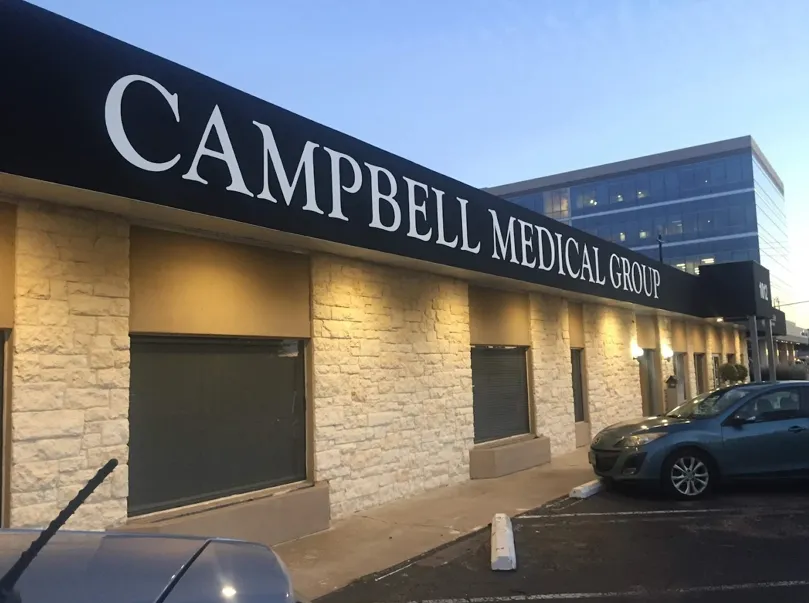
Campbell Health Center, under the leadership of Dr. Suhyun An, proudly serves the Houston, TX community, offering advanced non-surgical joint pain solutions and expert regenerative medicine services. To schedule your complimentary consultation and learn more about Dr. An’s system for avoiding pain medications and surgery, please call the clinic directly or visit our website to submit a convenient online request form. Our dedicated team will promptly arrange your evaluation and guide you toward achieving lasting pain relief.
Frequently Asked Questions
What is the expected recovery time after non-surgical joint pain treatments?
Recovery time after non-surgical joint pain treatments varies depending on the specific procedure and individual patient factors. Generally, patients can expect to resume normal activities within a few days to a week. For instance, after PRP or stem cell injections, many individuals report a gradual improvement in pain and function over several weeks. Physical therapy may be recommended to enhance recovery and support joint stability. Overall, the non-invasive nature of these treatments allows for quicker recovery compared to traditional surgical options.
Are non-surgical joint pain treatments suitable for all age groups?
Non-surgical joint pain treatments can be suitable for a wide range of age groups, particularly for those experiencing joint pain due to conditions like arthritis or injuries. However, candidacy is assessed on an individual basis, considering factors such as overall health, severity of the condition, and specific treatment goals. Older adults may benefit significantly from these treatments as they often seek to avoid surgery. A thorough evaluation by a specialist is essential to determine the best approach for each patient.
How long do the effects of non-surgical treatments last?
The effects of non-surgical treatments for joint pain can vary widely among patients. Many individuals experience relief that lasts from six months to several years, depending on the treatment type and the severity of their condition. For example, regenerative therapies like stem cell and PRP injections may provide cumulative benefits over time as new tissue develops. Regular follow-ups and assessments can help determine if additional treatments are necessary to maintain optimal joint health and function.
Can lifestyle changes enhance the effectiveness of non-surgical treatments?
Yes, lifestyle changes can significantly enhance the effectiveness of non-surgical treatments for joint pain. Adopting a balanced diet rich in anti-inflammatory foods, maintaining a healthy weight, and engaging in regular low-impact exercise can support tissue healing and improve overall joint function. Additionally, practices such as stress management and adequate sleep can further modulate pain perception and immune response. Integrating these changes with treatment plans can lead to better long-term outcomes and improved quality of life.
What should patients expect during their first consultation?
During the first consultation at Campbell Health Center, patients can expect a comprehensive evaluation that includes a review of their medical history, imaging studies, and a discussion of their specific pain concerns and treatment goals. The healthcare team will assess the patient’s joint condition and recommend personalized treatment options. This initial visit is crucial for establishing a tailored plan that aligns with the patient’s needs and helps them avoid pain medications and surgery.
Are there any specific contraindications for non-surgical joint pain treatments?
Yes, there are specific contraindications for non-surgical joint pain treatments. Patients with active infections at the injection site, certain bleeding disorders, or those taking anticoagulant medications may not be suitable candidates. Additionally, individuals with severe autoimmune conditions or uncontrolled systemic diseases may face limitations. A thorough medical assessment is conducted to identify any contraindications and ensure patient safety during treatment.
How can patients track their progress after treatment?
Patients can track their progress after non-surgical joint pain treatments through regular follow-up appointments with their healthcare provider. These visits typically involve assessments of pain levels, mobility, and overall function. Patients are encouraged to maintain a journal documenting their symptoms, activity levels, and any changes they notice. This information helps the healthcare team make necessary adjustments to the treatment plan and ensures optimal outcomes in managing joint pain.

